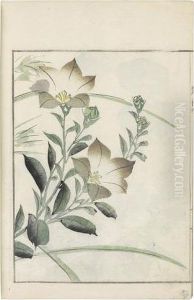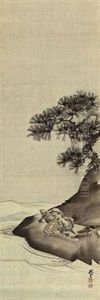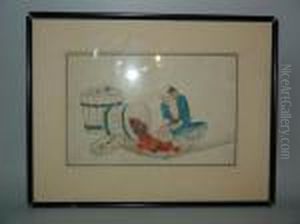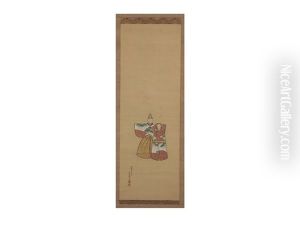Onishi Chinnen Paintings
Onishi Chinnen was a Japanese painter and poet active during the late Edo period. He was born in 1792 in Osaka, Japan, into a family with a strong appreciation for the arts. Chinnen was especially known for his skill in the bunjinga (literati painting) style, which was popular among intellectuals and scholars of the time. This style emphasized an expression of personal cultivation and was less concerned with technical perfection, often featuring subjects like landscapes, flowers, and birds with an emphasis on free brushwork and an overall sense of lyrical spontaneity.
Chinnen was also a part of the Nanga (Southern School) movement, which drew inspiration from Chinese literati painting traditions. These paintings were often accompanied by poetry, which reflected the artist's literary education and their ability to express themselves in multiple artistic mediums. Throughout his career, Chinnen created works that captured the essence of this movement, characterized by their refined and understated elegance.
Despite his contributions to the world of Japanese art, Chinnen's life was not devoid of hardship. Financial difficulties were a common theme for many artists of the literati style, as their work was often more appreciated by fellow scholars and artists than by the wealthy patrons who favored more decorative and technically precise artworks. Nevertheless, Chinnen remained dedicated to his art form, contributing to its development and influencing future generations of artists.
Onishi Chinnen passed away in 1851, leaving behind a legacy as a pivotal figure in the Nanga movement. His works are celebrated for their poetic integration of painting and calligraphy, and they continue to be admired for their evocative simplicity and depth. Chinnen's paintings can be found in various art collections within Japan and around the world, serving as a testament to his artistic influence and the enduring appeal of the bunjinga style.

![Azuma No Teburi [customs Of The Eastern Capital]](https://www.niceartgallery.com/imgs/477929/s/onishi-chinnen-azuma-no-teburi-customs-of-the-eastern-capital-6c46b64f.jpg)




